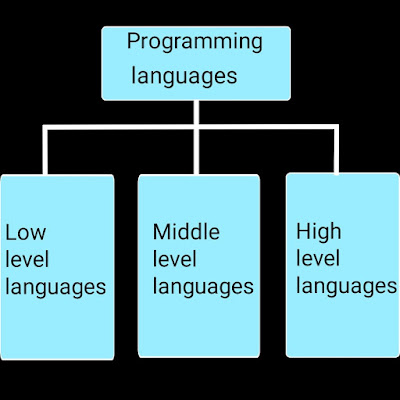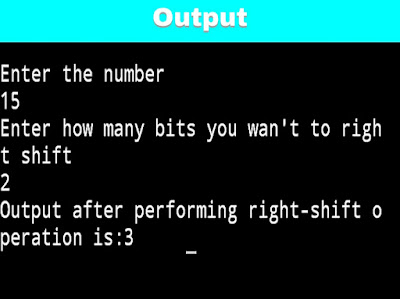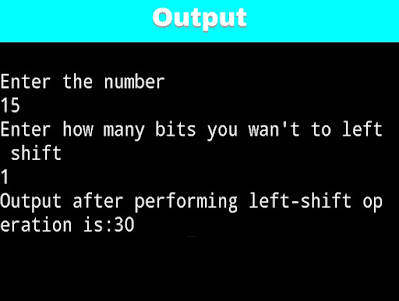Ex: write a C program to check number is maximum, minimum or equal between two numbers. How to write a C program to print number is maximum or equal between two numbers. C program to check number is maximum or equal between two numbers.
Input from user:
Enter the 1st number: 55
Enter the 2nd number: 25
Expected Output:
Number 55 is greater than 25
1. First we will accept 1st number from user which is 55.
2. After that we will accept 2nd number from user which is 25.
3. After that we use if-else statement or relational operators to check number is maximum or equal.
4. If number 1 means a greater than number 2- b then we will print a is greater than b.
5. If number 2 means b is greater than a then we print b is greater.
6. Otherwise we will print two numbers are equal.
#include<stdio.h>
int main()
{
int a,b;
printf("Enter the 1st number\n");
scanf("%d",&a);
printf("Enter the 2nd number\n");
scanf("%d",&b);
if(a>b)
{
printf("Number %d is greater than %d",a,b);
}
else if(b>a)
{
printf("Number %d is greater than %d",b,a);
}
else
{
printf("Given Two numbers are equal\n");
}
return 0;
}
Above program shows the following output:
Input from user:
Enter the 1st number: 55
Enter the 2nd number: 25
Expected Output:
Number 55 is greater than 25
Step by step logic of the given program:
1. First we will accept 1st number from user which is 55.
2. After that we will accept 2nd number from user which is 25.
3. After that we use if-else statement or relational operators to check number is maximum or equal.
4. If number 1 means a greater than number 2- b then we will print a is greater than b.
5. If number 2 means b is greater than a then we print b is greater.
6. Otherwise we will print two numbers are equal.
C program to check given number is maximum | minimum or equal between two numbers:
#include<stdio.h>
int main()
{
int a,b;
printf("Enter the 1st number\n");
scanf("%d",&a);
printf("Enter the 2nd number\n");
scanf("%d",&b);
if(a>b)
{
printf("Number %d is greater than %d",a,b);
}
else if(b>a)
{
printf("Number %d is greater than %d",b,a);
}
else
{
printf("Given Two numbers are equal\n");
}
return 0;
}
Above program shows the following output:








